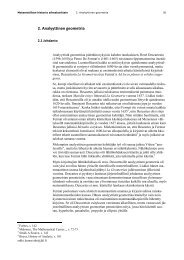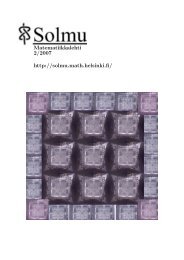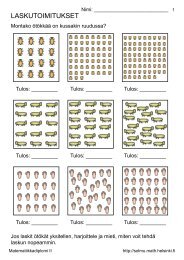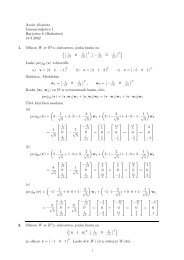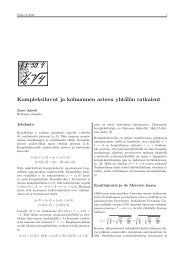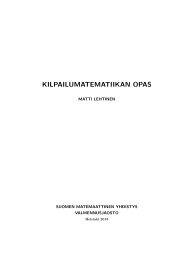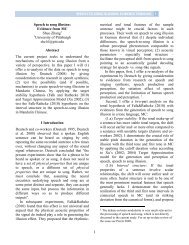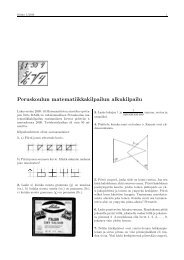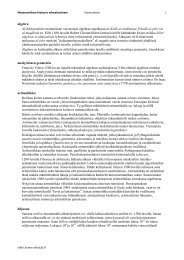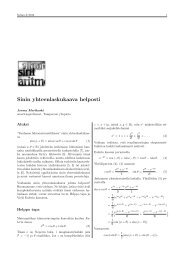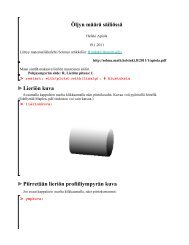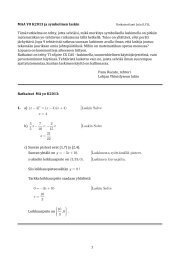Non-Newtonian turbulence: viscoelastic fluids and binary mixtures.
Non-Newtonian turbulence: viscoelastic fluids and binary mixtures.
Non-Newtonian turbulence: viscoelastic fluids and binary mixtures.
You also want an ePaper? Increase the reach of your titles
YUMPU automatically turns print PDFs into web optimized ePapers that Google loves.
8 1. <strong>Newtonian</strong> <strong>turbulence</strong><br />
1.1 Navier-Stokes equation<br />
The dynamics of an incompressible viscous fluid is described by the Navier-<br />
Stokes (1823) equation for the velocity field u(x, t), supplemented by the incompressibility<br />
condition:<br />
∂tu + u · ∇u = − 1<br />
∇P + ν∆u + f (1.1)<br />
ρ<br />
∇ · u = 0 (1.2)<br />
where P is the pressure, ρ is the density of the fluid, ν = µ/ρ its kinematic<br />
viscosity <strong>and</strong> f the resultant per unit mass of the external forces sustaining the<br />
motion.<br />
Let us briefly inspect the different terms appearing in Navier-Stokes equation:<br />
• u · ∇u is the inertial, nonlinear, term responsible for the transfer of kinetic<br />
energy in the turbulent cascade.<br />
• −∇P are the pressure gradients, ensuring incompressibility of the flow. In<br />
ρ<br />
absence of external forces, they are determined by the Poisson equation<br />
∆P = −ρ∂i∂juiuj<br />
obtained taking the divergence of eq. (1.1).<br />
(1.3)<br />
• ν∆u is the viscous dissipative term originated by the Reynolds stresses.<br />
This is the dominant term in the laminar regime.<br />
It is easy to underst<strong>and</strong> the physical meaning of eqs. (1.1)-(1.2); these are nothing<br />
else than conservation of momentum <strong>and</strong> mass per unit volume, respectively:<br />
dui<br />
dt<br />
1 ∂Tij<br />
=<br />
ρ ∂xj<br />
+ fi<br />
(1.4)<br />
∂ρ<br />
+ ∇ · (ρu) = 0 (1.5)<br />
∂t<br />
where T is the stress tensor. For a <strong>Newtonian</strong> fluid this is linearly dependent on<br />
the deformation tensor eij = 1<br />
2 (∂jui + ∂iuj) <strong>and</strong> is given by [6]<br />
Tij = −Pδij + µ(∂jui + ∂iuj − 2<br />
3 δij∂kuk) + ζδij∂kuk<br />
where the viscosity coefficients µ <strong>and</strong> ζ are positive functions of pressure <strong>and</strong><br />
temperature that will be assumed to be constant in the following. Let us observe<br />
8



